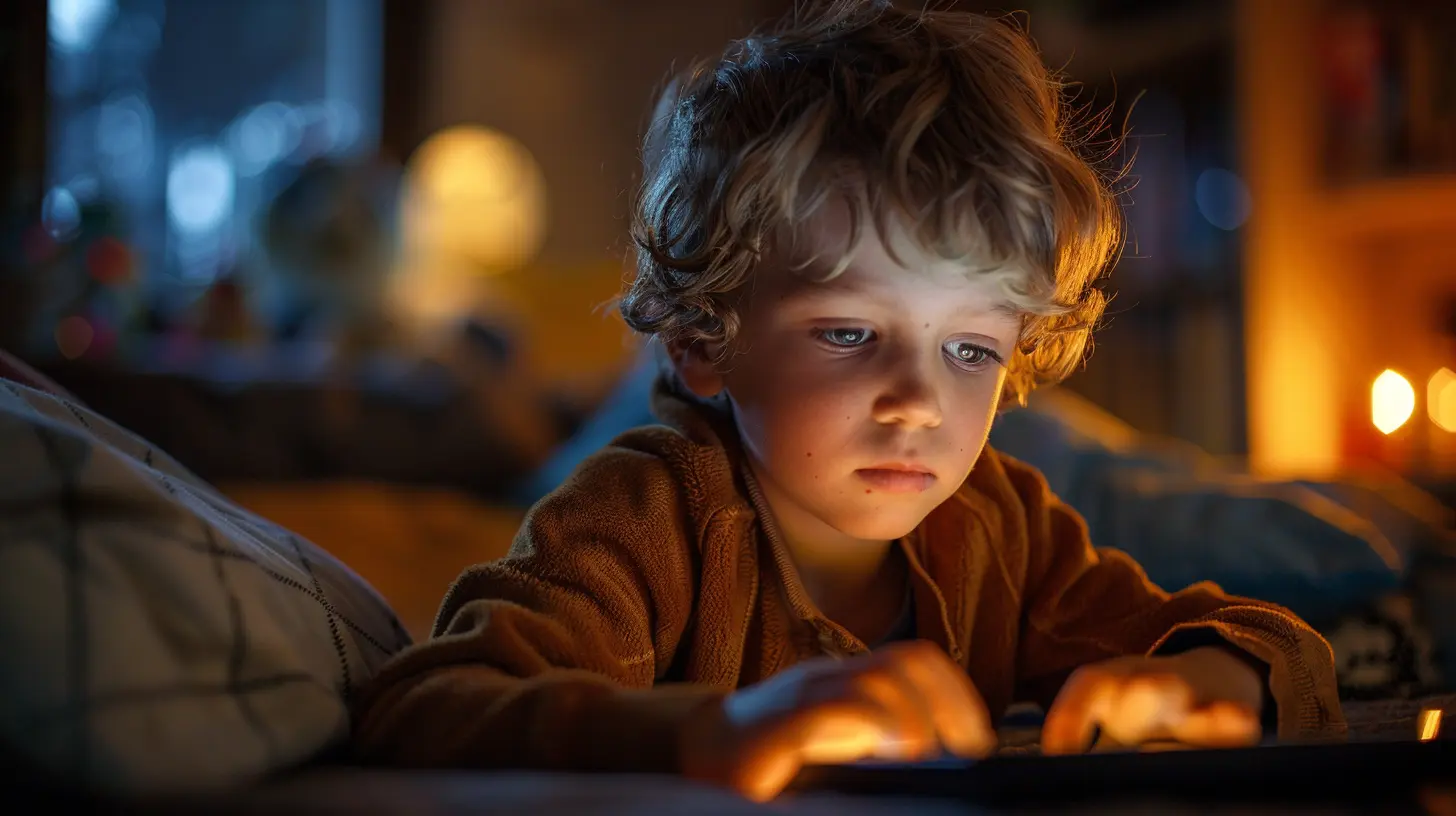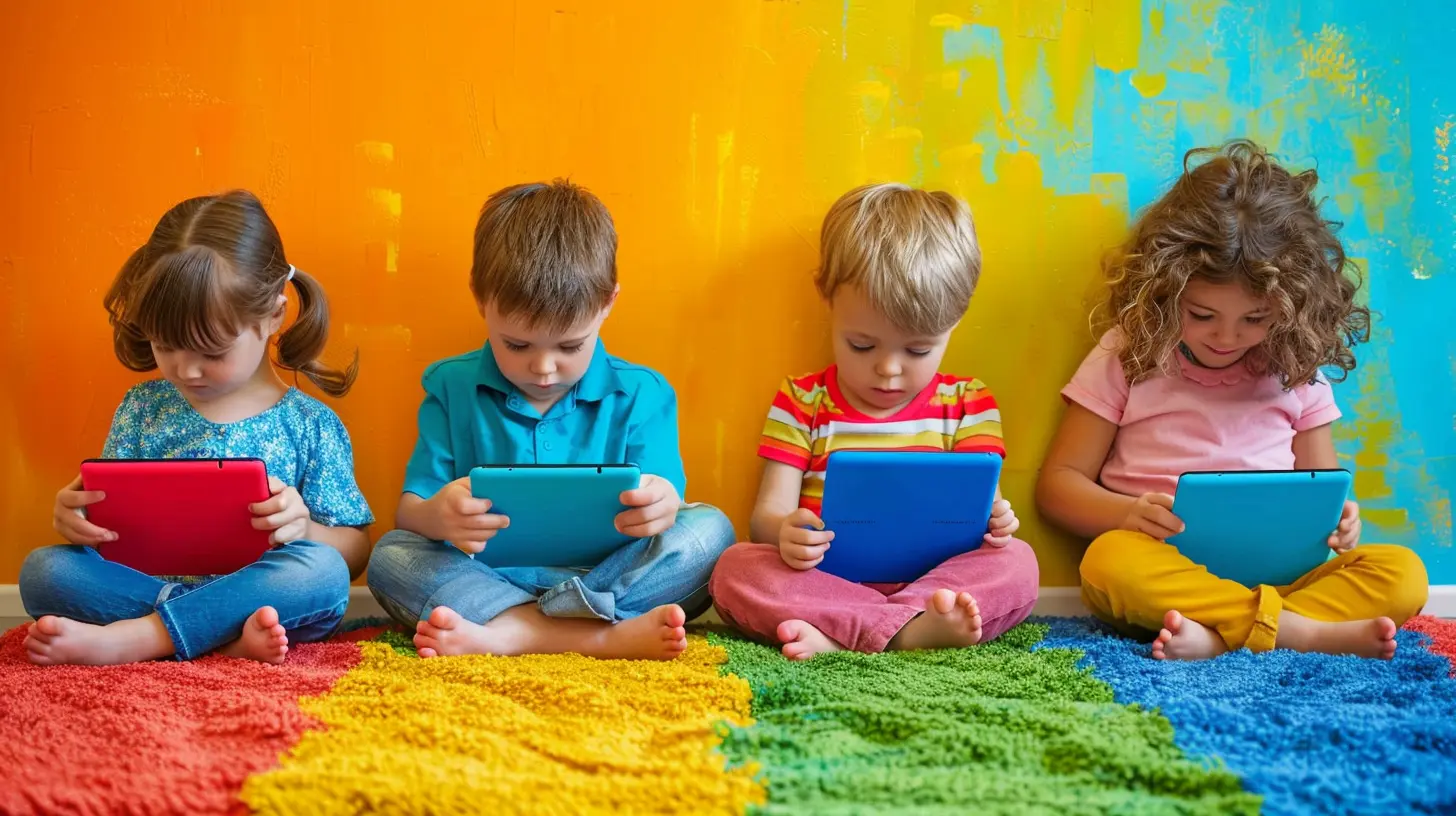Balancing Screen Time for Preschoolers: A Practical Guide for Parents
27 April 2025
Screen time is a hot topic in parenting circles. Some parents embrace it as a lifesaver, while others feel guilty about every tap and swipe their preschooler makes. The reality? Screens are here to stay, and banning them entirely isn’t realistic. Instead, the key to raising a tech-savvy yet well-rounded child lies in balance.
So, how much screen time is too much? How do you ensure quality over quantity? And—most importantly—how do you keep tantrums at bay when it’s time to unplug? Let’s break it all down in this practical guide.

How Much Screen Time Is Okay for Preschoolers?
The American Academy of Pediatrics (AAP) suggests limiting screen time to one hour per day for kids aged 2 to 5, focusing on high-quality programs. But let’s be honest—some days, that’s easier said than done. Life happens. Work deadlines pile up, laundry overflows, and sometimes, handing your child a tablet is the only way to get five minutes of peace.Instead of obsessing over exact numbers, think big picture. If your child is getting enough sleep, playing outdoors, engaging in hands-on activities, and hitting developmental milestones, you’re probably doing just fine. The goal isn’t to eliminate screens but to use them wisely.

The Downsides of Too Much Screen Time
Before we dive into strategies to balance screen time, let’s talk about why it matters. Excessive screen time can lead to:- Sleep problems – The blue light from screens messes with melatonin, making it harder for kids to fall asleep.
- Delays in language development – Less face-to-face interaction means fewer opportunities to practice communication skills.
- Reduced attention span – Fast-paced digital content can make real-life activities seem slow and boring.
- Increased tantrums and meltdowns – Ever tried taking a tablet away from a toddler? Enough said.
Understanding these risks helps us make informed decisions about when and how our kids engage with screens.

7 Practical Tips to Balance Screen Time for Preschoolers
Now, let’s get into the good stuff—actionable tips to find harmony between screen time and real-world experiences.1. Set Clear Boundaries (and Stick to Them)
Kids thrive on routine. If they know screen time happens at a certain time each day, they’re less likely to beg for it constantly. Some effective strategies include:- The 30-minute rule: Use a timer to limit episodes or app usage.
- Screen-free meals: This encourages conversation and family bonding.
- No screens before bed: Try to shut screens off at least an hour before bedtime.
Pro Tip: Use visual timers (like a sand timer or countdown clock) to help preschoolers understand when screen time is ending.
2. Choose High-Quality Content
Not all screen time is created equal. Watching an interactive educational show is vastly different from mindlessly swiping through YouTube videos. Look for:- Educational apps (PBS Kids, Khan Academy Kids)
- Slow-paced, interactive shows (Daniel Tiger, Bluey)
- Content that encourages movement (Cosmic Kids Yoga, GoNoodle)
If possible, co-watch with your child and ask questions about what they’re seeing. This turns passive screen time into an engaging experience.
3. Balance Screen Time with Hands-On Activities
For every hour of screen time, aim for plenty of screen-free play. Some easy, low-prep activities include:- Sensory bins (rice, beans, water play)
- Building with blocks or LEGOs
- Arts and crafts (finger painting, stickers, playdough)
- Pretend play (playing store, tea parties, dress-up)
The goal is to show kids that real-world activities can be just as fun as screens—if not more!
4. Use Screens as a Tool—Not a Babysitter
We’ve all been there—handing over a tablet just to get through a grocery store run without a meltdown. No shame in that! But whenever possible, use screens intentionally rather than as a default go-to.Examples of purposeful screen time include:
- Calling grandparents on video chat
- Learning a new song or dance on YouTube Kids
- Following a cooking tutorial for a fun kitchen activity
When screens serve a meaningful purpose, they become a helpful tool rather than a mindless habit.
5. Model Healthy Screen Habits
Let’s be real—kids learn by watching us. If they see us glued to our phones 24/7, they’ll want to do the same. Try to:- Limit phone use around them (no scrolling during meals)
- Verbally explain what you’re doing (“I’m checking a recipe” instead of appearing lost in your phone)
- Engage in screen-free hobbies (reading, puzzles, outdoor activities)
Being mindful of your own screen habits makes it easier to create a balanced digital environment for your child.
6. Create Tech-Free Zones
Designate certain areas in your home as device-free zones. For example:- Bedrooms – Helps promote better sleep.
- The dining table – Encourages conversation.
- The car – Increases awareness of surroundings and sparks imaginative storytelling.
Having these “sacred spaces” helps reinforce that screens are just one part of life—not the main event.
7. Prepare for Transitions
Ever noticed how kids freak out when screen time ends? That’s because their brains get deeply engaged in digital content. Abruptly turning it off can feel like pulling them out of another world.Make transitions smoother by:
- Giving a 5-minute warning (“Screen time ends in five minutes”)
- Using a fun cue (a catchy cleanup song or a silly countdown)
- Offering a compelling alternative (“Let’s go bake cookies together!”)
The smoother the transition, the fewer meltdowns you’ll face.

Final Thoughts
Balancing screen time for preschoolers isn’t about strict time limits or guilt-tripping yourself. It’s about intentionality—choosing when, how, and why screens are used. By setting boundaries, encouraging real-world activities, and modeling healthy habits, you can help your child develop a positive relationship with technology.And remember—no parent is perfect. Some days, screen time will be higher than others, and that’s okay. What matters most is the overall balance. You’ve got this!
all images in this post were generated using AI tools
Category:
Parenting PreschoolersAuthor:

Liam Huffman
Discussion
rate this article
4 comments
Raven Valentine
As a parent, finding the right balance for screen time can be challenging yet essential. This guide offers practical tips that are straightforward and easy to implement. Remember, quality interactions matter most—engage with your child during screen time, choose educational content, and prioritize playtime for well-rounded development.
May 2, 2025 at 4:57 PM

Liam Huffman
Thank you for your insightful comment! I completely agree—quality interactions and educational content are key to making screen time beneficial for our little ones.
Raleigh McElroy
Great article! Balancing screen time can be challenging, but your practical tips make it feel achievable. I especially love the idea of interactive activities to replace some screen time. It's all about finding that sweet spot, right? Thanks for sharing your insights to help us navigate this parenting journey!
April 28, 2025 at 2:21 PM

Liam Huffman
Thank you for your kind words! I’m glad you found the tips helpful. Finding that balance is definitely key. Happy parenting!
Zacharias Marks
Striking the right balance with screen time is essential for preschoolers' development. Incorporate interactive activities alongside digital content, set consistent limits, and prioritize quality educational programs to ensure a healthy, engaging experience that supports learning and social skills.
April 28, 2025 at 4:20 AM

Liam Huffman
Thank you for your insightful comment! Striking that balance is indeed crucial for healthy development, and I appreciate your emphasis on interactive activities and quality content.
Lindsey McQuillan
Essential balance for healthy development.
April 27, 2025 at 3:42 AM

Liam Huffman
Absolutely! Striking that balance is key for promoting healthy growth and development in preschoolers.



